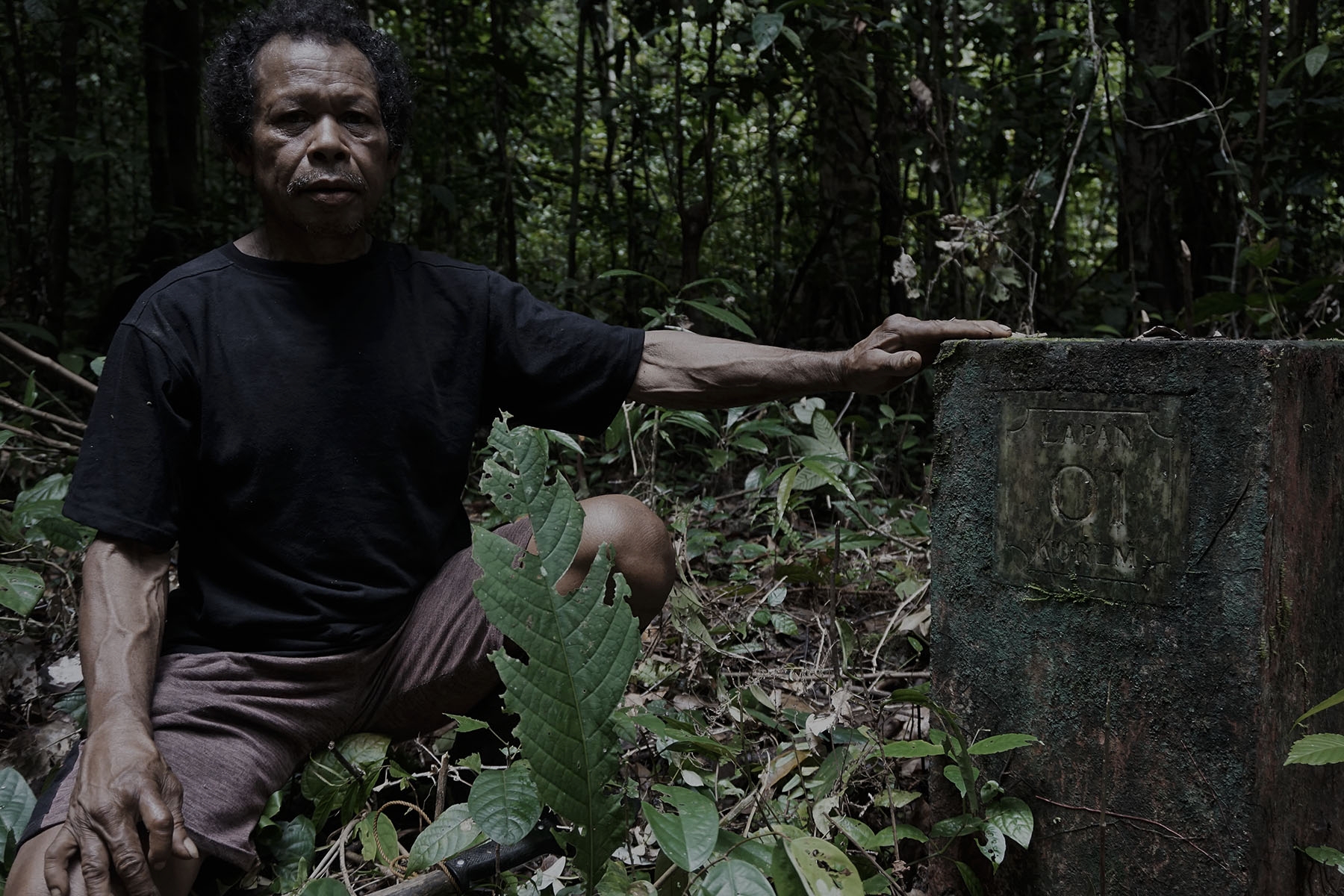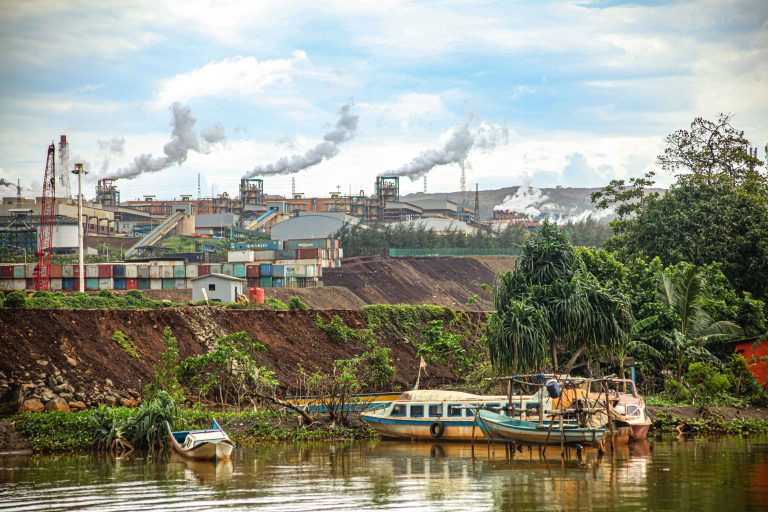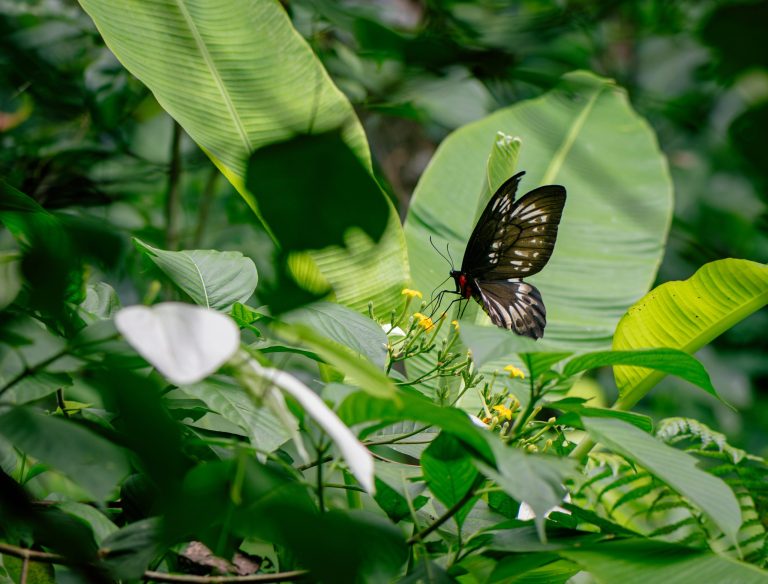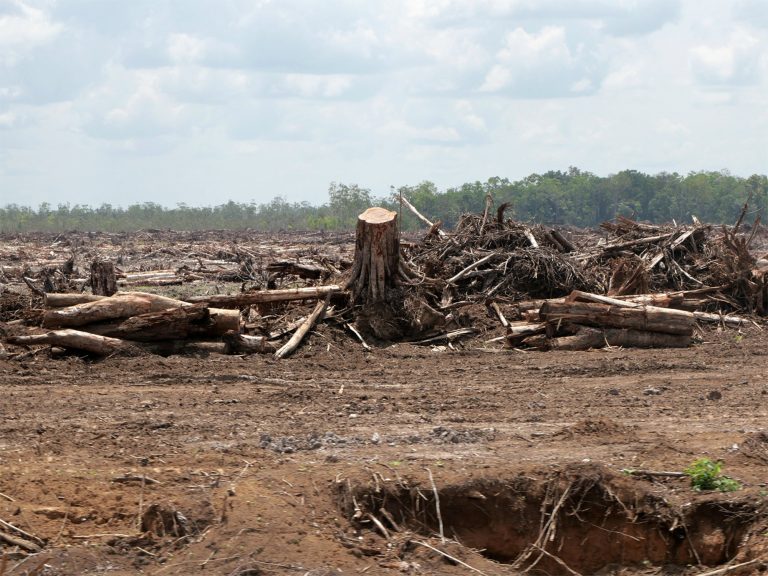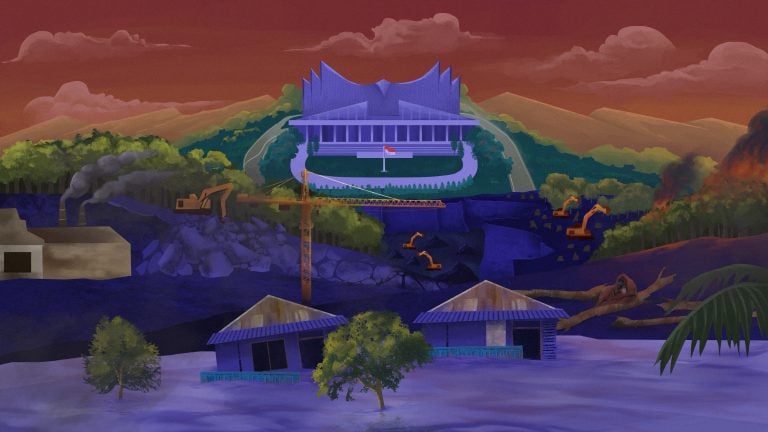- The people only recently found out the existence of a land release certificate to LAPAN in 2002. In 1982, they thought they only signed the attendance list and agreed to the cost of compensation for crops. Those who refused were branded OPM.
- A Biak woman, Arina, recounted her memories of dark moments in Biak people’s lives: the 7-meter tsunami, the military operation, and more recently, the threat of losing their land to Indonesian government ambition to build a spaceport, touted to Elon Musk.
A HISSING SOUND, like gas, came from the direction of the beach.
Arina could not say for sure whether the hiss was the sound of the wind or the crashing waves, or both.
But she remembers how violently the stilt house she lived in near the beach shook. It was an earthquake.
Moments after, a 7-meter-high wave hit. Such was Arina’s recollection of the tsunami that destroyed her village back in 1996.
Arina Kapitarauw recounts her story while sitting on a plastic chair in her living room. She had wanted to go to the farm, but the sky was overcast and before she knew it, rain was falling. The ground was too slippery. She might slip and fall if she insisted on leaving.
The living room area of the house is about three by four meters. There isn’t any furniture apart from a few plastic chairs, a small table, and a few family photos hanging on the wall; mostly her children’s graduation photos. There is a door connecting the living room and the bedroom. Another door leads to the kitchen.
Not too long ago, Arina and her family lived in this house. The Kapitarauw clan used to be the only people living in a complex of stilt houses near the beach. After the tsunami, the Indonesian army built cement houses for affected residents on the customary lands belonging to the clan Abrauw-Rumander. The new houses marked the beginning of a coexistence between indigenous peoples of various clans and the migrants in one village.
Every now and then, Arina stands up from the plastic chair as she gets lost in her story. Her eyes glaze over, her expression tense. The past is coming back to her.
During her 60 years in Saukobye Village, Arina has gone through no less than three traumatic events: the Indonesian military operations in 1960 – 1970, the tsunami of 1996, and the Bloody Biak tragedy in 1998.
Lives were lost, but days go on as if nothing had ever happened.
The 1996 Tsunami
Arina remembers exactly that the tsunami happened on Saturday, February 17, 1996, 3 p.m.
Her husband had just gone to sea. They were preparing for a family funeral. The oci fish were in season. Coming home from a successful fishing trip, her husband grinned ear to ear as he showed off the abundant oci fish in his large fishing bucket.
Her husband then went into the kitchen to grill some of the day’s catch, which he sat and ate with a serving of rice.
The radio on the dining table was playing religious songs.
Arina was getting ready to go to the farm. Tomorrow was Sunday, and she had to go to church. This was the time to harvest keladi (taro) and other vegetables. After folding her clothes and storing them neatly in the closet, Arina brought a machete, basket, and other tools to the field.
However, as she stood up, she felt the floor shake.
Arina was a little annoyed. She thought her husband was making the floor shake from the excitement of catching so many fishes.
“Hey, are you rocking?”
Her husband was puzzled, “Huh? I’m not rocking anything.”
That was when they realized the ground beneath their feet was shaking. The tremor was so huge that she couldn’t stand up.
In a hurry, her husband started to run, jumping out of the house. He shouted, “Hey, come down. The house is going to fall.”
But the ground was shaking so violently that Arina couldn’t even stand. ”Come down. The house is falling. You’re going to die there,” her husband shouted again.
Somehow, she managed to get down despite slipping on the stairs. The floor was still rocking.
For a moment, the earthquake seemed to have stopped. Her husband went back inside to eat. Arina got ready to pick up her two children, who were at a relative’s house. They were no stranger to earthquakes and intended to return to their daily activities.
However, when Arina looked up towards the beach, she spotted something unusual. The waves were starting to rise. Her husband’s boat was lifted. “Is it the wind? Waves?” she wondered, unsure of what to make of what she was seeing.
Her husband came back down, looking towards the beach.
“Wave. Run.”
The earthquake that measured 8.2 on the Richter scale was followed by a 7-meter-high tsunami.
“The waves came. Three times.” says Arina.
NO ONE guessed that the earthquake would lead to a tsunami. The northern coast of Papua was never categorized as a tsunami-prone area. A study shows that no tsunami was ever recorded in the region from 1900 – 1995.
The locals were caught completely by surprise. Several residents had been cheering as the sea receded from the beach just before the tsunami hit. They were catching the fishes that were stranded on the sand. Old and young were celebrating with grilled fish.
“They were eating at the beach. Relaxing. They all died.”
Luckily, when they saw the waves starting to rise, Arina and her husband immediately evacuated to higher lands. Men, women, and children were running. Some were swept away by the waves. Children slipped out of their parents’ arms, taken away by waves. Adults were getting impaled on the feet by glass shards, iron, and nails.
Her husband had told her to climb up on a tree. “Climb up the coconut tree. I will climb the African tree.”
But Arina realized something: the rising waves were bringing along lumps of wood and stones. “The coconut tree will break and we’ll die,” she said.
So they kept running.
During the first wave, Arina could still spot some houses left standing. People were trapped underneath screaming for help. After the second and third waves hit, nothing was left. “It’s all gone,” she whispered.
The natural disaster, which was centered in Biak and could be felt as far as Supiori, Manokwari, and Sarmi in Papua Land, killed at least 108 people, injured 423 people, and resulted in 58 people missing. A total of 5,043 houses were destroyed.
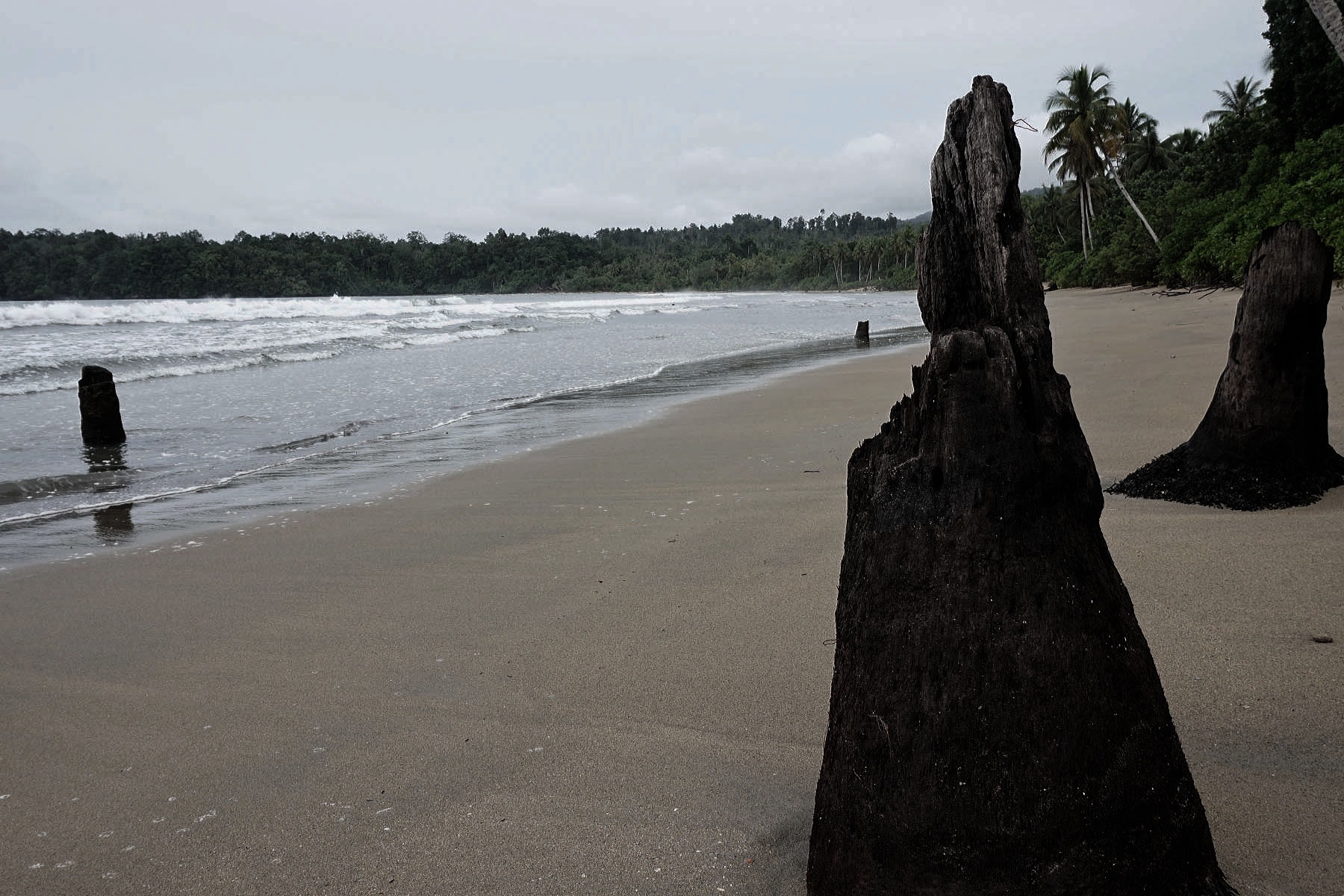
Saukobye: The Village of Survivors
Saukobye village is located on Biak Island, a small island in Cendrawasih Bay, north of the coast of Papua Province. The total area of the island is about 2,500 km², less than half of Bali.
From the city of Biak, it takes another hour by car to get to Saukobye village. The area of the village is only 8 km². The village head said it was inhabited by 126 families, 567 residents.
The Warbon indigenous people, consisting of the Abrauw-Rumander clan, live there. The name “Abrauw” was taken from the name of the abrauwi tree — the local name for the apyao tree thriving around the coast. There is a folklore that goes as follows: their ancestors made homes under those trees around the beach. They descended down from the mountains, building huts around the trees. They then named themselves the Abrauw people.
The elders refer to the Abrauw – Rumander clan as a minority fam, because their only customary land, around 2,000 hectares, is located in Saukobye village. The Abrauw clan is not found anywhere else in Biak.
“They only have that land,” said elder Apollos Sroyer.
Abrauw and Rumander lived in the coastal area until the tsunami hit — it was formerly called Andei Village and was adjacent to other clans like Ampnir, Kapitarauw, and the migrants from Java and Makassar. They lived simple lives: the people went to sea to fish and went up to the highlands to farm.
Residents said the settlements along the coast were like small towns. Markets, schools, police stations, post offices, they even had cinemas there.
However, the tsunami forced residents to move in droves to the highlands. The name Andei was changed to Saukobye village. ‘Sau’ in Biak means “alive” or “survive”, so Saukobye means safe roads or safe settlement.
The customary land of the Abrauw – Rumander clan was initially used to farm. Then they started to give out the rights to build houses on their land to other residents. They also donated land to the government to build a sub-district office, a police station, and a school.
It was alright, said Marthen Abrauw, a mananwir and an elder of the Abrauw clan in the village.“It’s for the common good, isn’t it?”
Now, there are at least 11 clans in Saukobye village: Abrauw, Ampnir, Dimara, Dorwari, Erbo, Kapitarauw, Mansusen, Ruamikel, Rumbrar, Rumruren, and Sermumes. There are also people from outside the island, coming from as far as Ambon, Batak, Buton, Java, and Toraja.
For the indigenous Marbon people, Saukobye is the only place where they could live and is part of their identity.
THE LOCATION OF THE WATER SPRING in Saukobye village is less than 200 meters away from Marthen Abrauw’s house. Residents would usually walk down there while carrying empty buckets or dirty clothes, then climb back to the settlement with buckets filled to the brim with drinking water and freshly washed clothes. There is a divider between the pool of water that is used specifically for drinking and cooking and the pool used for laundry.
If you go further down, towards the forest, 500 meters – 1 kilometer from the settlement, you will see community farms filled with a variety of vegetables, areca nut trees, betel trees, and carbohydrate sources such as keladi and petatas (sweet potatoes). Residents would go to the farm at 8 a.m. and return to the settlement at 3 p.m., bringing with them fresh farm produce that would be sold at the market.
From the farm, it is not too far to get to the beach. Around the coast there are abrauw and apyao trees, which are considered sacred trees by the residents.
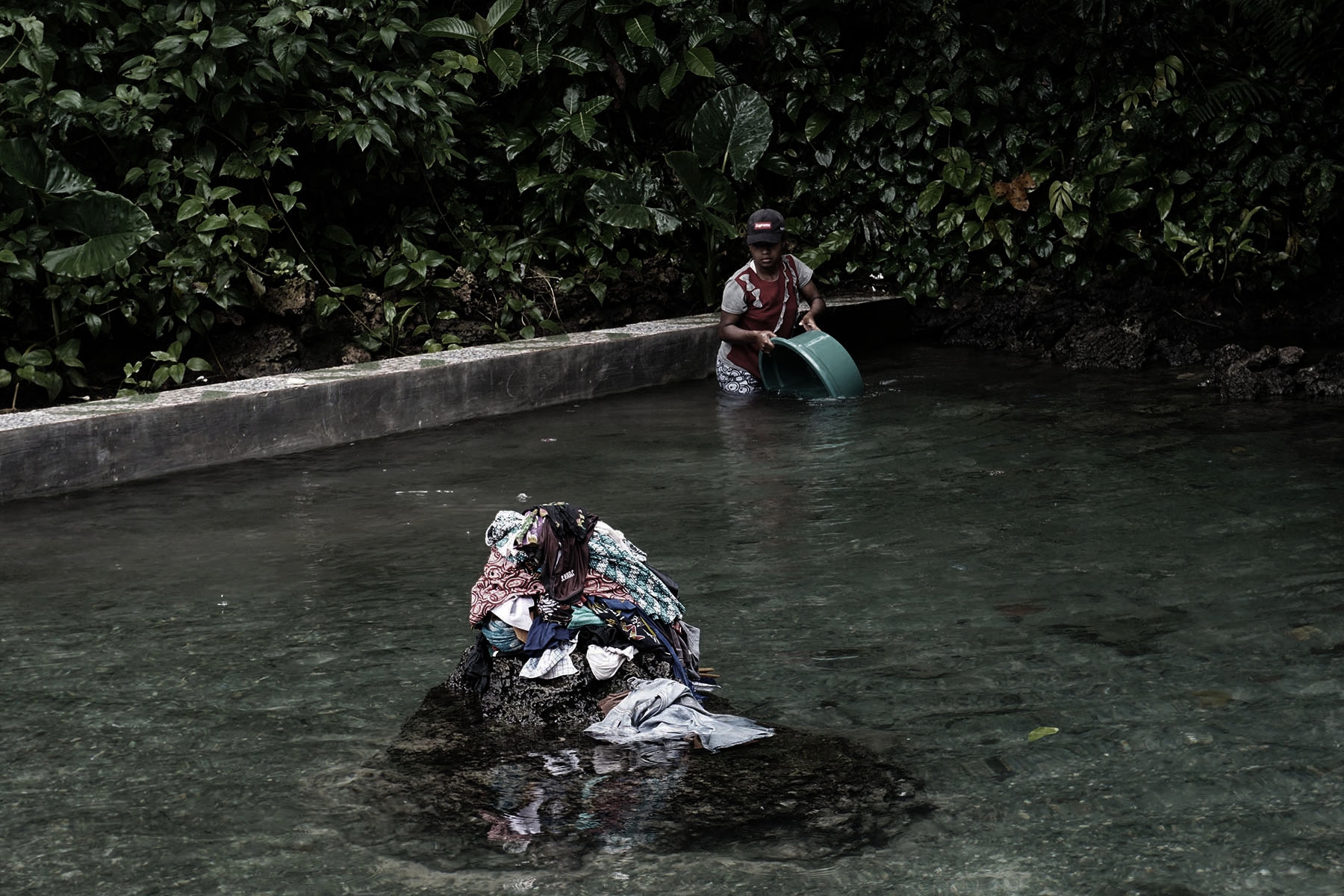
Their ancestors were part of nature. The Abrauw people believe that their ancestors still remain in the trees and are watching over the lives of their descendants. The Warbon indigenous people often asked for help from the spirits of their ancestors.
They would go to the location of the sacred tree just as the sun begins to set, then the Abrauw family would mention the names of all the ancestors’ descendants, from tete (father) to nenek moyang (great grandparents), as a sign that they needed help. They also brought with them offerings of areca nut, betel nut, and cigarettes.
“We come here, we feed nature, we call on the ancestors and leave all matters to them. Let them take care of it. As we humans work, our ancestors also keep us away from evil people, those whose intentions are not good,” said Aleks Abrauw, son of Marthen Abrauw.
Therefore, the emergence of a plan to build a spaceport within the area of the customary land angers them. Some of their customary lands have been used to help victims of natural disasters after all.
Losing their land completely is akin to losing their identity as indigenous Warbon people. Every area in Papua is customary land protected by law; moving into it is tantamount to occupying the customary land of another clan and could trigger inter-tribal tensions. Where would their descendants live?
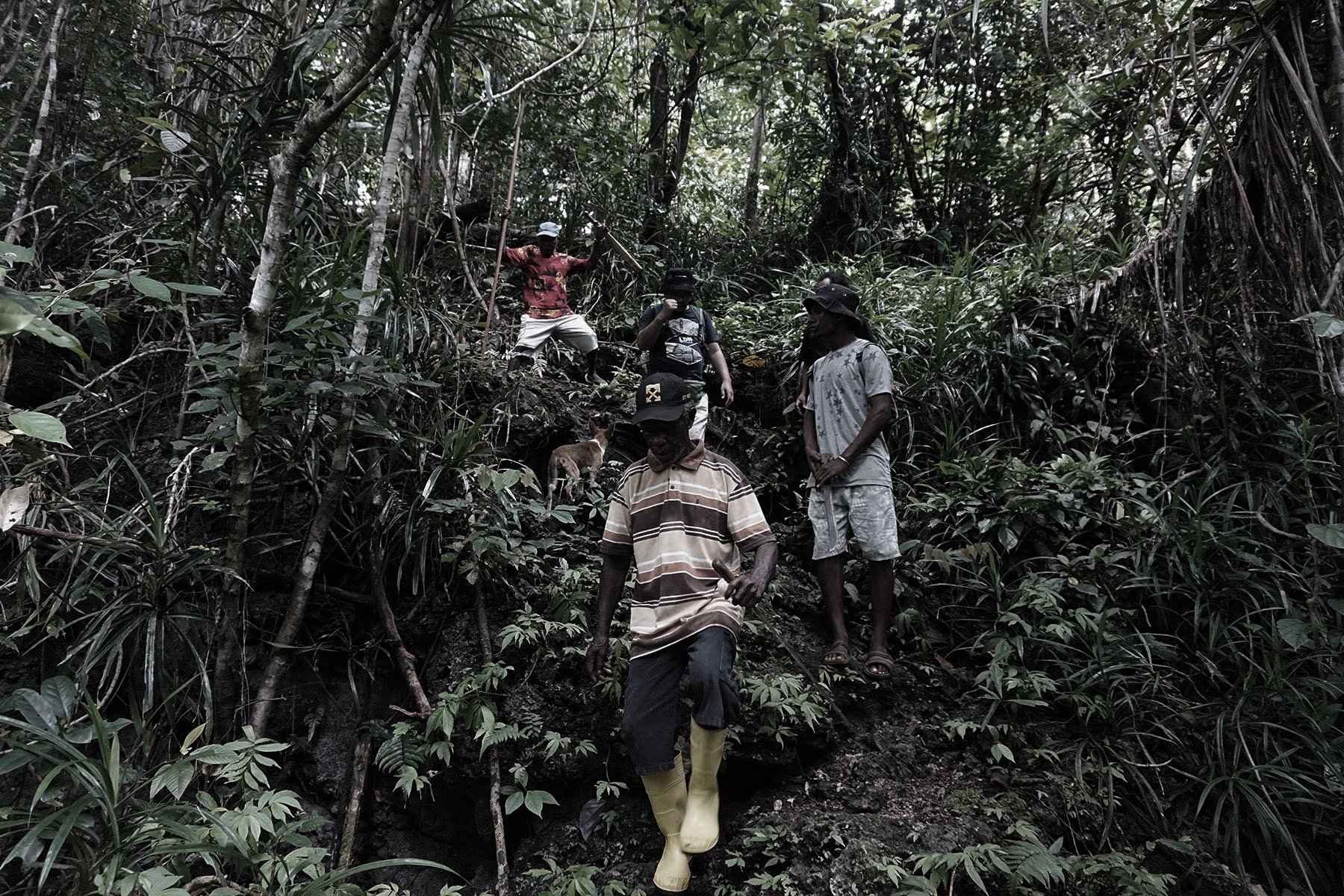
Dark Memories of Indonesian Military Operations
Arina is as familiar with violence done by the Indonesian military as she is with keladi and areca nut trees.
Her parents had taken her to the farm from a very young age. She would join in digging the ground using sticks, making holes and planting keladi.
This fond memory is immediately followed by a shadow of fear over the military operations in her area. The reason children used to go with their parents to the farm was because for children of her age, it was too dangerous to be left alone at home.
“If we stay home and chaos breaks out, what do we do? I was scared.”
The entirety of the Papua region, including Biak Island, has been the target of Indonesian military operations since the 1960s. The Indonesian government carried out propaganda, mobilization, and the killings of Papuans who called for independence. This included repressing the cultural and political movements of indigenous Papuans in urban areas. On December 1, 1961, when the Morning Star flag was raised, and the song “Hai Tanahku Papua” (Dear, My Land, Papua) was played along with the official introduction of the name “West Papua” — considered to be a step towards legitimizing Papuan independence — the Sukarno http://projectmultatuli.org/wp-content/uploads/2021/06/5668A357-39CA-4B12-902A-DAE1F707FCD7-1.jpegistration in Jakarta accused the Dutch government of having formed a “puppet state”.
On July 26, 1965, the Organisasi Papua Merdeka (Free Papua Movement) was born in Manokwari. Led by John Ariks, a charismatic figure of 75 years, and the Mandatjan brothers, Lodewijk, and Barends, the Awom brothers, Ferry, and Perminas as military leaders, the movement spread out to the Kepala Burung (Bird Head, referring to northwest area of Papua Land) with their main striking force hinging on ex-members of the Papua Battalion, known also as “PVK”.
The Soeharto regime continued the repression by sending out elite combat troops to win the Penentuan Pendapat Rakyat (Decision of Popular Opinion) of 1969. The mechanism submitted by the United Nations and Western countries was called the ‘Act of Free Choice’, but really it was the ‘Act of No Choice’ as only 1022 Papuans were chosen to be representatives by the Indonesian government. Every single one supported integration into Indonesia. Meanwhile, around 800,000 Papuans were not given the right to determine the future of their nation,
Even though West Papua was forced to become a part of Indonesia (a new province called Irian Jaya), the Free Papua Movement, henceforth called OPM, continued low-intensity armed resistance in Papua’s forests. The Awom brothers themselves hail from Biak. Their successor, Seth Rumkorem, who founded the second OPM in 1971, was also from Biak. Cultural leaders such as Arnold Ap, who formed a Papuan folk music group called Mambesak, was also born in Biak. Practically speaking, Biak is the birthplace of the early generation of Papuan intellectuals.
Arina is now recalling a time during the military operation in Biak, when she was in her teens. Indonesian soldiers searched for OPM members in the forest, including the forest near a resident of Saukobye village — then still called Andei. The villagers were terrified. Women were afraid to leave their houses, fearing rape.
“The soldiers then were so mean,” Arina says in a half-whisper. Her tone grows more somber as she recounts stories of her life during those times.
Accusations of being part of the OPM were thrown around by the soldiers to locals. Her husband, Perkolius Rohwa, was asked by the soldiers to spy on the OPM when he was still a child.
“We were asked to take part in patrols. Told to pretend to walk into the forest. We were like spies. We understood, so we didn’t want to,” says Perkolius. “The soldiers said that if you see anyone you don’t know in the forest, shoot immediately.”
Arina’s father became a victim of military violence. Her father farmed in the forest. Together with other villagers, he built resting huts on the beach. Every Monday – Friday, that was where her father lived. He only returned home on Saturday and Sunday for church activities.
One day while she was with her father, Indonesian soldiers came to the hut. They were suspicious of her father’s activities.
“Why don’t you go home? Why are you staying here?”
“I stay here because I have to work. Farming. Going to sea. It’s a tradition passed down from my parents.”
The soldiers didn’t believe her father. He and several other men were accused of going into the forests to provide food for the OPM.
Soldiers started hitting their backs and buttocks with guns. They were kicked around. Some villagers’ huts were also burned as they were told to go home.
Arina could not stand seeing her father and grandfather beaten up. “They are old. My father was in his 70s. I was crying.”
The National Commission on Violence Against Women (Komnas Perempuan) stated in its report “Stop Sudah! Kesaksian Perempuan Papua Korban Kekerasan dan Pelanggaran HAM 1963 – 2009” noted that civilians, including women and children, were often the target of military operations in North and West Biak from 1967 – 1969.
[In 1967] OPM started coming down to the villages… [in] North Biak. Shootouts started happening. We hid in the forest. KKO [now the Marines] were in Marsyom… I lived in the forest from June ‘68 until ‘80… The KKO chased us, but we were hiding… If the soldiers went away, we built huts [in the forest]; when they came back, [we] dispersed…
The second child was born in ‘70, a daughter… In ‘79 I walked with her [to the settlements on the beach] to ask if there were any soldiers coming. It turns out that there was a soldier hiding in the forest. He fired and hit [my] daughter who was standing in front of me. I carried the girl and I ran far away. The soldier was shooting at me too, but it only grazed my clothes, I didn’t die… My daughter was shot in the back, they threw her into the farm… The people at the beach buried her… in 1980, we came out of the forest, we took the bones to the house at the beach.
To this day, there is no data detailing the number of victims of military operations since the 1960s throughout Papua, Biak included.
In 2016, the Ministry of Women Empowerment and Children Protection stated that it planned to register women and children who were victims of military violence, in collaboration with Komnas Perempuan. However, Komnas Perempuan said that the plan was never followed up by the Indonesian government.
NGO on human rights, ELSAM, reported on Indonesian military operations in Papua, called Operation Baratayudha, stated that throughout 1967, 73 people were shot dead, 60 people arrested, and 39 weapons were confiscated.

The Arrival of LAPAN: Taking 100 Hectares of Land
Arina Kapitarauw is not of the Abrauw clan. However, she was born and raised in Saukobye. She has a farm on the land which she claims belongs to the National Institute of Aeronautics and Space, or Lembaga Penerbangan dan Antariksa Nasional (LAPAN) in Indonesian. The route that her husband must use to go to sea every day passes by the 100-hectare land.
Plans to build a spaceport in North Biak aren’t exactly new. Back in 1980, the residents of Saukobye were greeted by the arrival of LAPAN. At the time, LAPAN was conducting a survey of the 100-hectare land near the coast. Along with the local government, LAPAN asked the indigenous peoples to give up land in the name of development.
Arina was in her 20s when she witnessed her grandfather signing the record of transfer. She remembered the locals receiving Rp. 15 million, which was agreed upon as compensation for crops.
Arina remembered that the Rp. 15 million was distributed among the three clans: Abrauw, Rumander, and Kapitarauw. Each clan received Rp. 5 million. Then the money was divided again amongst the other clans. Arina herself received Rp50 thousand.
At the time, Rp. 15 million was huge, she said. Household necessities were cheap. Some people used the money to buy cars. Some bought ‘Johnsons’, a local name for boat engines that they needed to go to sea.
But she also remembered the transactions at the time being one-way: the Jakarta party together with security forces gathered the locals; the Jakarta party was going to purchase the locals’ lands; the Jakarta party asked the locals for their signatures.
Apart from LAPAN, the North Biak Sub-District Head was also present at the meeting as a representative of the government. Also, there were members of the North Biak branch of the Indonesian National Armed Forces (TNI).
People of the time were not good at reading and writing. Not many went to school; even if they did, it was mostly up to the 1st or 2nd grade. If there were any agreements, it was achieved through intimidation,
“Are you OPM?”, asked one of the military officers with the rank of sergeant from the North Biak Koramil whenever someone refused the Rp. 15 million compensation offer.
The military threatened: refusing meant that they were hindering development, and people who hindered ‘development’ were considered part of the Free Papua Movement.
Thus, news of the existence of the land release certificate of the customary land to LAPAN 22 years later hit the locals like the sky itself was falling.
At a meeting on August 21, 2002, the Head of Saukobye Village, North Biak District, arrived with members of the TNI. They stated that they were following orders from the then president, Megawati Soekarnoputri, to carry out land checks.
The locals knew about the existence of the land release letter and of the 100-hectare land certificate for the first time during that meeting.
Since then, until 2022, protests and objections from the residents against LAPAN’s claim to the 100-hectare land have continued.
The Warbon indigenous people keep a complete record of the chronology of LAPAN’s arrival, along with all other parties from Jakarta, the TNI/police, and local governments, the ups and downs of the plan to build the spaceport, and the sweet promises made to them.
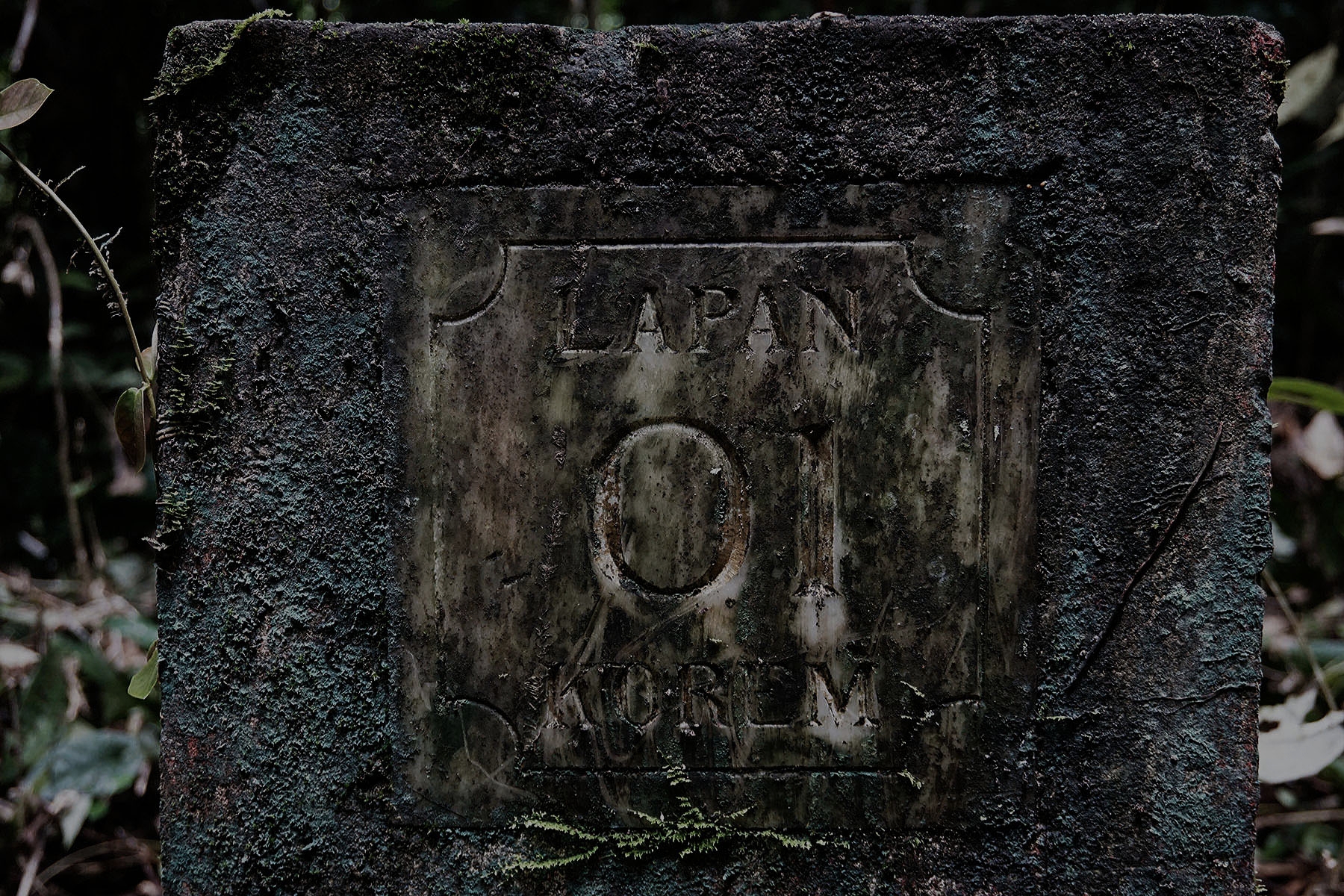
Unilateral Release of Warbon Customary Land
The accusation “You are OPM” continues to haunt people’s minds to this day. Ten years after military operations ended, residents were gathered to attend the LAPAN meeting in 1980.
They didn’t have much choice: not showing means being branded as OPM; Not signing the attendance list also means being branded as OPM.
Marthen Abrauw, 65, witnessed his grandfather being threatened. His grandfather said, “Alright. It’s better than dying. Just accept it.”
However, they remember the agreement at the time was only regarding the compensation paid out for crops. “First, they said that they wanted to build an airport. Then they said they wanted to take wood,” said Arina. “There was [at that time] a timber company. So, the ship was carrying wood. There were wood sensors. So [we thought] they just wanted to buy wood.”
The issuance of the land release certificate, which had only been brought to the locals’ attention in 2002, made the community suspect that they were tricked: their signatures on the attendance list were used for the certificate.
The certificate in question states that the residents are willing to relinquish customary lands covering an area of 1,010,00 m². It contains the signatures or fingerprints of the “customary landowners” and “crop owners”, along with receipts of payment for land acquisition, land compensation, and crop compensation.
The Warbon Indigenous Peoples do not recognize the release. The customary land of Saukobye Village, called Andei Village in 1980, belongs to the Abrauw-Rumander clan. The parties that were signed under “landowners” on the certificate were the Rumander and Kapitarauw clans.
Despite the signatures, the local community has never been given the opportunity to accept or reject the handover of land. Neither LAPAN nor the soldiers who were always meeting and talking to the locals have ever communicated the functions and potential impact of land development to the community.
The locals said that they were only given sweet nothings. They called it “sugar language”. “With this development, residents will receive houses, clean water, electricity, radio, TV, telephones, and jobs,” said the government. The Republic of Indonesia Armed Forces, commonly known as ABRI in Indonesian, were intimidating them by saying, “Don’t stand in the way of development. If you do, it means you’re trying to rebuild OPM.”
During the 1980 meeting, the local government (secretary of the Biak Numfor region, the sub-district head of North Biak, and the village head of Andei) were constantly guarded by ABRI members.
The local government also picked out who was allowed to sign: the head of the Warbon IV Korem village and his son were chosen to represent the Warbon indigenous community as rightful owner of the land; the secretary of the Andei village and several members of the Warbon indigenous community were appointed by the government as witnesses of the transaction; the head of Korem villages I – IV as well as the village head were also present as witnesses.
Neither LAPAN nor the local government took issue with what was clearly incorrect procedure. If there was evidence of a certificate, the land was considered to be legally owned by LAPAN.
Mochammad Luqman Ashary, Coordinator of the Functions of the Satellite Control Center, Space and Atmospheric Observation, and Remote Sensing in Biak responded that his party has obtained the certificate that proves legal ownership of the land.
“In regard to documents, we have everything, including payment receipts, consisting of land acquisition documents and compensation for crops,” said Luqman.
The Regional Body for Planning and Development (Bappeda) was no different. Tobbery Pahlevis, Sub-Division Head of Transportation and Telecommunications of the Papua Province Bappeda, claimed that most of the local community have approved development plans for the spaceport.
“There are no problems concerning land ownership. One could say that the issue regarding land has been more than 80 percent resolved,” said Tobbery.
The Widespread Practice of Land Grabbing in Papua
In 2018, Reverend Dora Balubun was attending a church conference in Sorong when she received a call from the chair of the synod. “Tomorrow you’re moving to North Biak.”
It was reported that a few military generals came to Saukobye Village. The head of the North Biak class, Reverend Gerson Abrauw, was receiving threats. He nearly avoided being beaten for disagreeing with the handover of the customary land to LAPAN. Hence, the head of the synod sent Reverend Dora to check out the situation in the village.
Reverend Dora Balubun is the head of the Keadilan, Perdamaian, dan Keutuhan Ciptaan (Justice, Peace, and Integrity of Creation), also known by its acronym KPKC, for the GKI Synod in Papua. This division handles human rights and environmental concerns in Papua.
Since 2002, Reverend Dora has been closely following the land dispute case in Saukobye Village. Reverend Gerson, surnamed Abrauw and owner of the village’s customary land, reported that there were irregularities during the land’s handover process.
She went to the village to see the conditions for herself and to listen to what the residents had to say. While there, the women asked the church to help solve the matter. “We don’t want to move. I already have a place. I live here.”
Despite that, as the situation seemed to have calmed down for years, the church did not follow up on cases until 2018.
At the time, news of the generals’ arrival in the village alerted Reverend Dora that the village locals were no longer safe. Having served in West Biak for five years, she understood that North Biak was a “red area”.
The local community still holds memories of the Indonesian military operations there since the 1960s. The Biak Berdarah (Bloody Biak) tragedy was particularly fresh, having happened only back in July 6, 1998 and often considered the darkest chapter in the history of West Papua. People were killed, there were reports of women being raped, and their bodies found floating in the sea, all of these over peaceful protests for the right to raise the Morning Star flag atop the Biak Water Tower for five days. It was led by Filep Karma, a civil servant.
Reverend Dora said that the arrival of military personnel, especially generals, was a traumatic experience for the residents. As a society, they felt cornered.
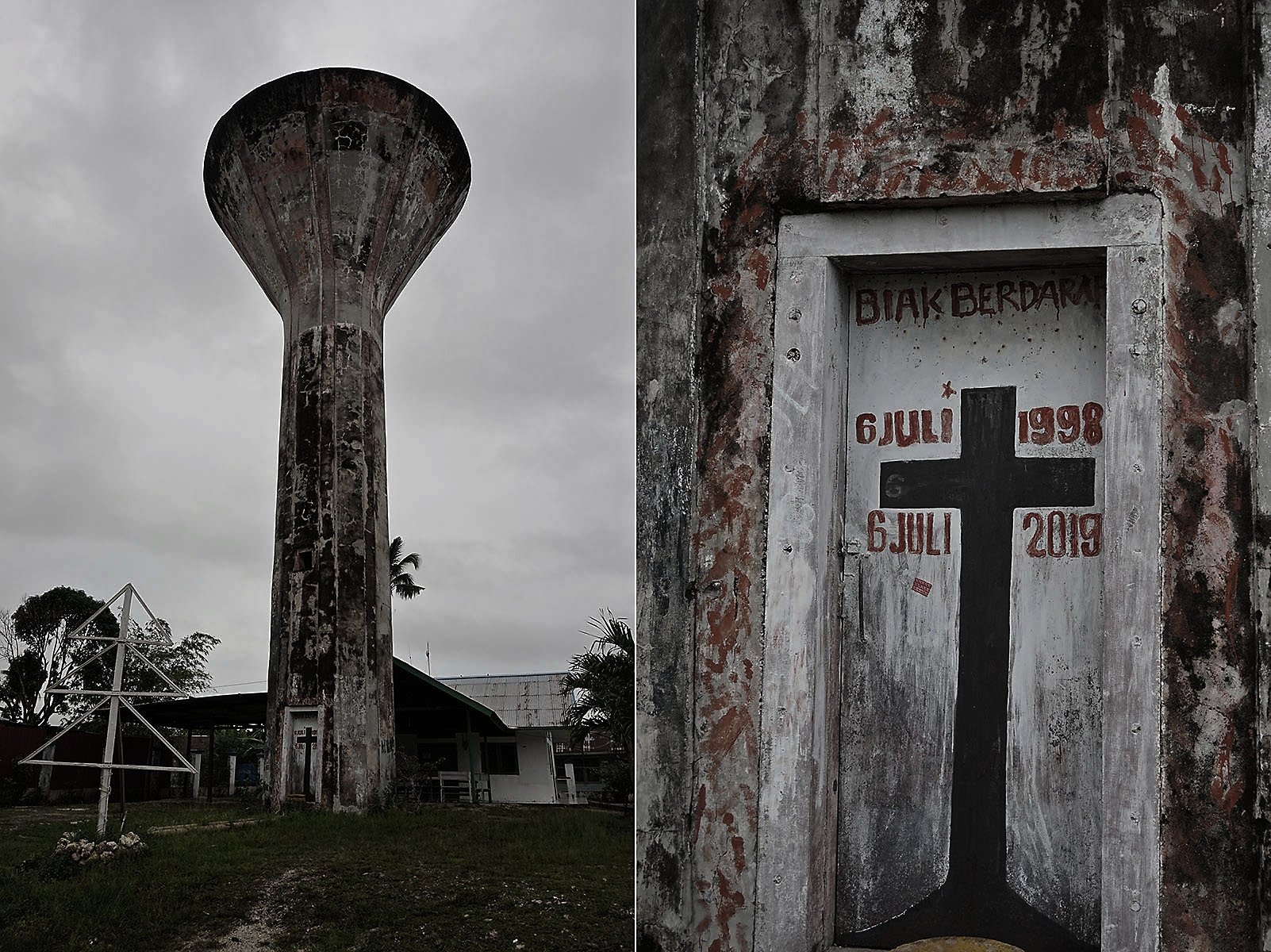
Arriving at the location, Reverend Dora sought out more information from the locals. She confirmed that there was indeed a meeting at the Andei Village Multipurpose Hall, North Biak District. The meeting involved the North Biak local government, the TNI/Polri, and indigenous peoples. In this forum, the government submitted plans for the spaceport development.
Reverend Gerson Abrauw, head of the North Biak class as well as owner of customary rights, was given the floor to speak as a representative of the indigenous community. He expressed public objections over the plan, which he considered a land acquisition process by LAPAN that was made possible through intimidation tactics. In addition to that, customary areas were also getting smaller ever since the 1996 tsunami.
He also regretted that LAPAN has never properly socialized the potential impacts of development on the surrounding community.
After the meeting ended, Reverend Gerson was almost attacked by a retired officer of the TNI AD (Indonesian National Military – Land Force), but the residents and the police managed to prevent it.
There were also reports that several retired TNI-AD personnel, former village heads, and former members of the Biak Numfor DPRD (Regional People’s Representative Council) touring the village with four and two-wheeled vehicles, inviting people to sign a petition stating support for the development of the spaceport.
Should the residents refuse, they were threatened to be faced with an “iron fist”. A number of people who were not owners of the customary lands admitted to signing the document.
Most of the residents that Reverend Dora met with expressed concerns, including those who did not own any customary lands. “Reverend, if we accept this, where will we go?”
“As migrants, we also farm here. We have been given a place to stay here.”
Reverend Gerson’s nephew also sought out Reverend Dora to vent their frustrations, “Tanta,” they said, “So am I not a Warbon person anymore? Tanta, what if we die?”
Those types of conversations were like cuts to the Reverend’s heart. She could not say anything other than trying to convince the locals that she would try everything she could do. “That was the only thing I could muster up, as I didn’t know what else I could say. We stood at the door for quite some time.”
In 2019, the chair of the synod ordered the heads of institutions in three synods, including Reverend Dora at the JPIC Synod, to meet with the Papuan DPRD to convey the situation on the ground at Saukobye Village.
To this, the DPRD only responded by stating that they have handed the matter to the church. They said there wasn’t much they could do. They had been to Jakarta to try and raise the issue to the central government, but to no avail.
Uncertainty plagues the residents of Saukobye Village to this day.
Reverend Dora said that land grabbing practice, like that experienced by the Warbon indigenous people, is common in Papua.
“There have been too many. Almost all customary rights in Papua today are disputed,” she said. The JPIC Synod found that almost all conflicts related to customary rights of indigenous peoples in Papua were coercive. The people were under intimidation.
“Behind it all, there must be the military,” she continued.
The foundation of the church intervening in human rights issues in Papua was based on the XIV Sorong Synod Session and the XV Wamena Synod Session which contained the GKI Service Program Principles.
To use simple terms, the church is involved in handling cases of human rights violations in Papua because it is in their interest to defend the congregation. This much was conveyed by Reverend Dora towards those who questioned the church’s motives.
“The congregation there is 100% our congregation. We cannot allow our own congregation to suffer,” she said. “Even if they weren’t church members, we would defend them. So that goes double for church members.”
‘The Government Does Not Own the Land, We Do’
Apollo Sroyer, Manfun Kainkain Karkara Byak (Chairman of the Biak Customary Council), looks on furiously at the way the Indonesian government has taken Papuan customary lands.
“The government is using the land; they do not own the land. Do not make it seem as if you own the land and we are the newcomers. Do not reverse the logic,” he said.
“The land is ours. So, if you want to build on it, you ask us.”
The development of the spaceport is one of the national strategic plans. The development plans have been stated in Law No.21/2013 concerning Space. It was also in the Rencana Induk Penyelenggaraan Keantariksaan 2016-2040 (Master Plan for the Implementation of Space Activities 2016-2040).
At the regional level, the spaceport development has also been stated in the Papua Province Regional Regulation No. 23 of 2013 concerning the Regional Spatial Plan for the Province of Papua 2013-2033.
Article 51 paragraph (3) stipulates the Biak Numfor Regency as one of the national strategic areas – that is, “areas for which special planning is prioritized have a huge influence on the national scope.” Biak Numfor was especially designated as a strategic area with high needs for technology: weather and environmental satellites; a telemetry tracking station, and a satellite launch command station.
However, until now, the implementation of those projects has not come to fruition. Law No. 21/2013 remains in the form of a draft of government regulation – called the RPP on Procedures for Control, Development, Propagation, and Protection of Space Technology. The environmental impact analysis has not even begun.
Meanwhile, based on the map of the Biak Numfor forest area, LAPAN’s 100-hectare land is still considered a protected forest area.
Both LAPAN and the Papua Bappeda have stated that they were waiting for further instructions from the central government. The two local institutions have not been much involved in the development plan.
Head of the National Research and Innovation Agency (commonly known as BRIN in Indonesian), Laksana Tri Handoko, briefly remarked that there had been no new developments regarding the plan to build the spaceport in Biak. He also said that LAPAN currently had no plans to conduct a survey in the area.
Marthen Abrauw, the 15th generation of the Abrauw clan and its oldest member, said that he and his family were not opposed to the construction of the spaceport. He was objecting to the fact that it was going to be built on his land.
“I thought to myself, this land is mine, I have children here. If they want to build it, they can build it someplace else.”
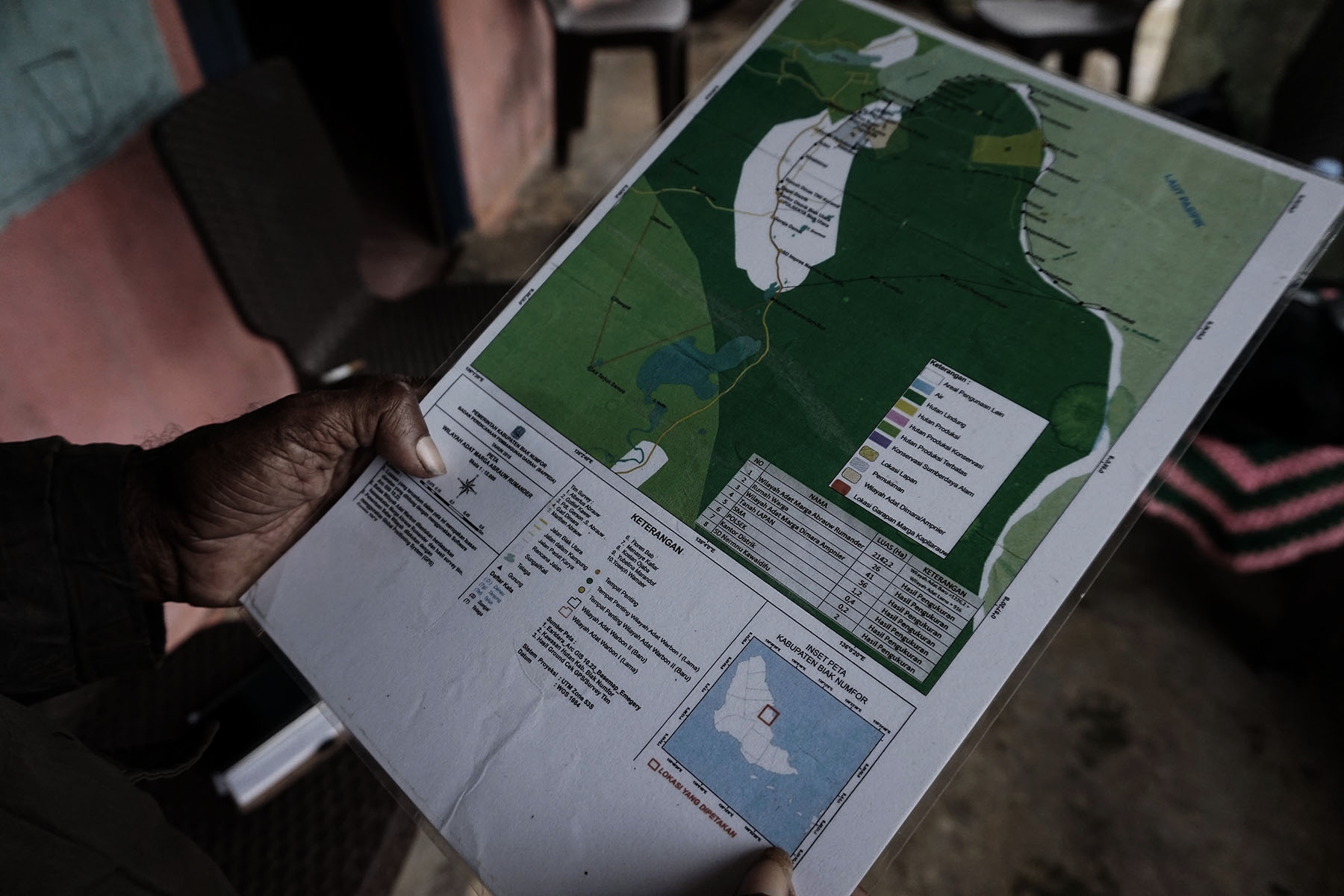
By law, the Constitutional Court has confirmed that customary lands do not belong to the state. The Constitutional Court ruled that “customary forests are forests located within the territory of customary law communities”, not “forests belonging to the state located within the territory of customary law communities.” Therefore, indigenous peoples maintain full rights over the management of their customary territories.
However, in its implementation, the Constitutional Court’s decision was often ignored. The RUU Masyarakat Adat (Indigenous Peoples Bill), which has been under discussion since the Susilo Bambang Yudhoyono http://projectmultatuli.org/wp-content/uploads/2021/06/5668A357-39CA-4B12-902A-DAE1F707FCD7-1.jpegistration, has yet to be ratified, even though this law would play a vital role in strengthening the recognition and protection of indigenous peoples.
To that end, a few regional heads are taking advantage of this legal vacuum by designing a legal umbrella for indigenous peoples at the regional level.
In Papua, Sorong Regency became a handful of regencies and cities that are under this legal umbrella. In 2017, the Regent of Sorong, Johny Kamaru, signed Regional Regulation No. 10/2017 concerning the Recognition and Protection of the Moi Indigenous Peoples in the Sorong Regency.
Sorong Regency is an example of legal recognition as well as the local government’s alignment with indigenous communities. This can protect indigenous peoples from land grabbing practices. In 2021, the Regent of Sorong successfully won a lawsuit revoking the business license of an oil palm plantation that was carrying out malhttp://projectmultatuli.org/wp-content/uploads/2021/06/5668A357-39CA-4B12-902A-DAE1F707FCD7-1.jpegistration.
Yohanes Mambrasar, http://projectmultatuli.org/wp-content/uploads/2021/06/5668A357-39CA-4B12-902A-DAE1F707FCD7-1.jpegistrator of the Papuan chapter of Aliansi Masyarakat Adat Nusantara (The Indigenous Peoples’ Alliance of the Archipelago), or AMAN for short, explained the urgent need for regulations concerning indigenous peoples at the district/city level to specifically identify them and their customary territories on the regional stage.
The local regulation of indigenous peoples in Sorong, for example, identifies indigenous groups along with their sub-tribes. The description of customary areas and terms used by each sub-tribe are also included. There is also information regarding land ownership and use cases for those lands for each sub-tribe.
“There are many cases of land grabbing on the regional level. Indigenous peoples are having a hard time defending their land, especially when they must deal with government policies or investors,” said Yohanes.
Biak Numfor Regency does not yet have a similar regional regulation.
Harun Rumbarar, http://projectmultatuli.org/wp-content/uploads/2021/06/5668A357-39CA-4B12-902A-DAE1F707FCD7-1.jpegistrator of the People’s Network for PSDA, and Papuan Economic, Social, and Cultural Rights (known by the acronym JERAT), stated that only a total of three districts or cities in Papua have local regulations in place for the recognition and protection of indigenous communities: Bintuni, Sorong, and Jayapura. Five other regions are going through the legalization process: Boven Digul, Kaimana, South Sorong, Supiori, and Yapen; Yakuhimo is currently being guided.
“It is our hope that all districts in Papua will eventually have local regulations for indigenous peoples. But we need time to be able to do everything,” said Harun.
Biak Regent Herry Ario Naap claimed in Jakarta: residents who “continue to talk to the media are not Biak residents.”
“It is true that they are Biak people, but they live in other districts, were born in other districts, or they went to school in Jayapura. But they are the ones criticizing,” he claimed on March 30, 2022. “So, they don’t live in Biak, they weren’t born in Biak, they didn’t grow up in Biak, but they are complaining about this.”
Herry Naap supports the construction of the spaceport on the grounds that it will have a positive impact on the locals. On the other hand, “if there were more adverse impacts, I would stop the construction myself and I would not allow it to take place.”
Regarding regional regulations to recognize and protect indigenous peoples in Biak Numfor, Herry Naap said that for the past two years, his http://projectmultatuli.org/wp-content/uploads/2021/06/5668A357-39CA-4B12-902A-DAE1F707FCD7-1.jpegistration had “voiced to the Regional Development Planning Agency, along with indigenous peoples’ institutions, to make maps of customary areas”. He did not specify any targets or give any updates regarding the process.
On the same occasion, the head of the Biak Numfor DPRD, Milka Rumaropen, was asked for comments but refused to give any.
***
ARINA ONCE came to Jakarta. Her foster child had just graduated university. She and her husband attended the graduation ceremony.
Her first impression of the capital: it was hard to eat betel nuts because there were no betel trees. “I brought betel nuts from here, but there are no betel [nuts] [in Jakarta]. I asked the child, ‘Do you have betel?’ Upon returning home, they brought betel leaves instead.”
Out of nine children, including adopted children, the youngest is the only one currently living with her. The rest of the children were working in Biak and Jayapura. Some are married and are living in their husband’s family villages, and some are in university.
To her, education is the key to improve standard of living. In the past, her parents did not go to school. Arina calls it “the dark ages”. On the receiving end of abuse, they were afraid and clueless.
“It was a different time compared to now, where children are able [to resist the construction of the spaceport on their land]. Nowadays, children go to school until they are in university.”
They financed their children’s education by farming and fishing. Arina is not quite sure how much she earns exactly, but almost every day, after returning from the farm, she sells betel nuts, corn, taro, cassava, vegetables, and fresh fish at the markets in the village and in the city.
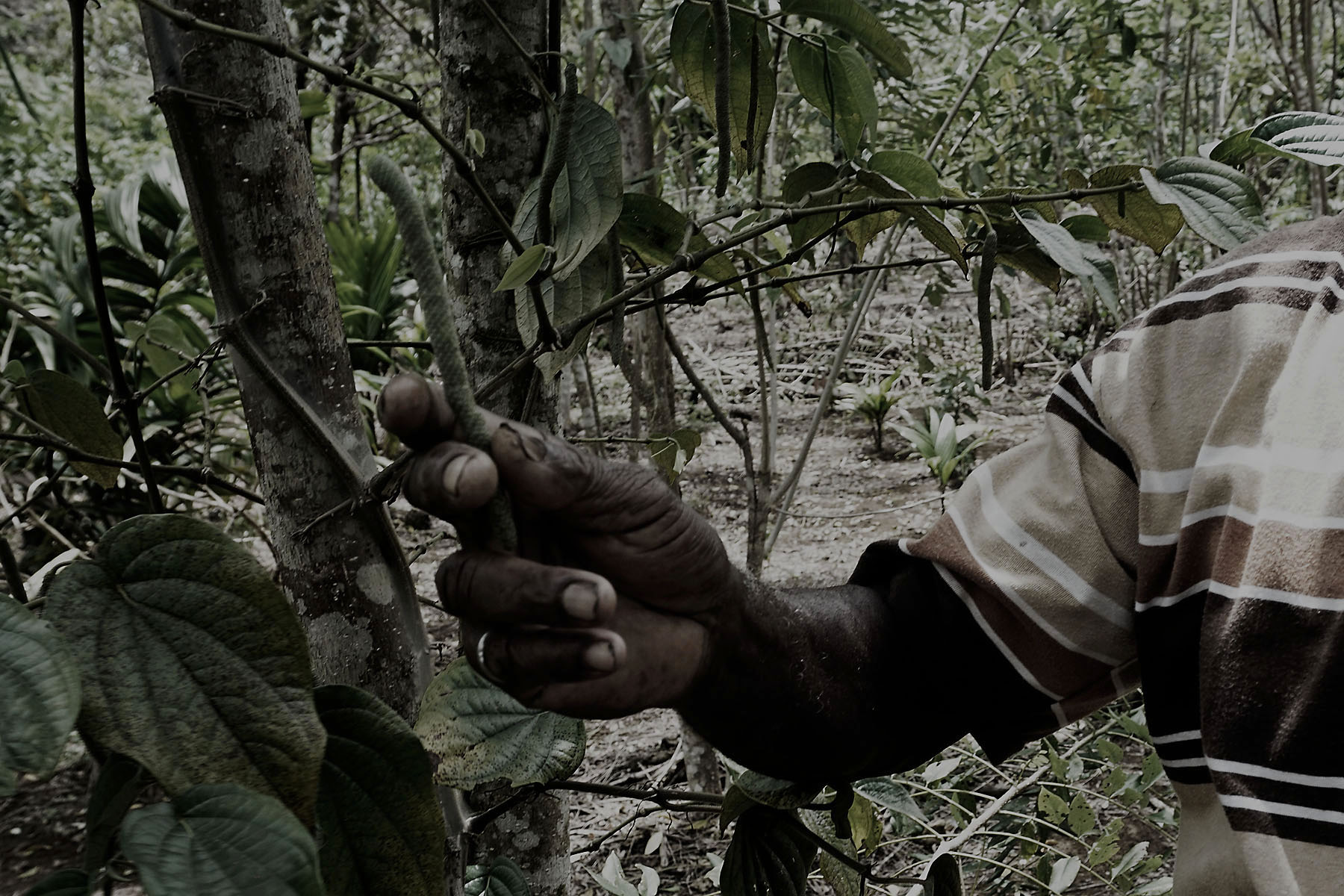
The youngest child who still lives with her plans to take the army entrance test. They just graduated high school with dreams of becoming a member of the TNI.
She and her husband are still hoping that the children will continue their work of fishing and farming. Her husband used to conquer the seas in a small wooden boat. They made the fishing nets themselves from tree roots found on the riverbanks. The roots are cut, mashed, dried, and then woven into the shape of a trawl.
Now, going to sea does not require as much effort. There are already ships and Jonson engines.
“But my youngest child, they do not want to. They harbor ambitions of becoming a soldier.”
Arina is worried. Why be a soldier? Why not continue your studies in healthcare or fisheries?
The trauma of military operations lingers on within her. The Bloody Biak incident on July 6, 1998, kept her from going to town for a year out of fear.
“I didn’t go down to the city to sell anything back then. We ate only farm produce. Taro. Cassava. Vegetables. Fish.”
The army’s job is to shoot at people in the forest, Arina said to her child. “Ah, it’s [their] own fault,” they replied, “they wanted to show people who was boss, so they got shot.”
Well, that’s that then. Arina could not forbid her child from joining the army. She will pray for him to pass the entrance test. “It’s a good job,” she quips.
Translator: Cynthia Ongga
Editor: Risty Nurraisa
This article is a collaboration between Project Multatuli and Papua-based Jubi.

